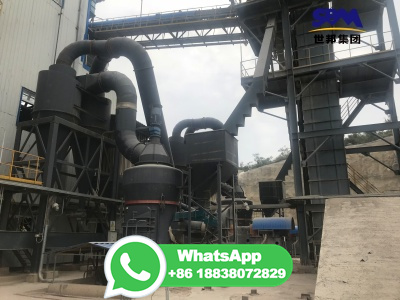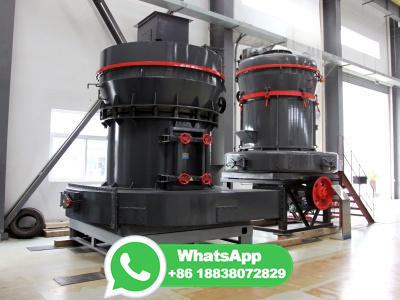
This set of Engineering Chemistry Multiple Choice Questions Answers (MCQs) focuses on "Carbonization of Coal". 1. All types of coals can be converted into coke. a) True. b) False. View Answer. 2. The process of converting coal into coke is called ______. a) Coking.
WhatsApp: +86 18203695377
Conclusion. Gasification is a key technology to convert lowenergydensity solid fuels into highenergydensity cleaner fuel gas. Gasification converts solid biomass in small building component of carbon monooxide and hydrogen through fixedbed and fluidizedbed operations, which can be used in multiple ways.
WhatsApp: +86 18203695377
These gases or liquids are sometimes called synthetic fuels or synfuels. Synthetic fuels are made by heating coal in large vessels. These fuels produce fewer air pollutants when burned than burning coal directly. In North Dakota, the Great Plains Synfuels Plant converts coal into synthetic natural gas (syngas). Syngas produced from coal can ...
WhatsApp: +86 18203695377
Carbon monoxide (chemical formula CO) is a poisonous, flammable gas that is colorless, odorless, tasteless, and slightly less dense than monoxide consists of one carbon atom and one oxygen atom connected by a triple is the simplest carbon coordination complexes, the carbon monoxide ligand is called is a key ingredient in many processes in industrial ...
WhatsApp: +86 18203695377
The indirect route is composed of 2 steps: First, coal is gasified with steam and oxygen to produce a synthesis gas (syngas), which is then cleaned to rid of dust, tar, and acid gases. The second step reacts the synthesis gas with a catalyst in the FischerTropsch process, which converts the syngas into a range of hydrocarbon fuels such as ...
WhatsApp: +86 18203695377
This process has been conducted in both underground coal mines and in the production of town gas. C (as Coal) + O 2 + H 2 O → H 2 + CO. If the refiner wants to produce gasoline, the syngas is collected at this state and routed into a FischerTropsch reaction. If hydrogen is the desired endproduct, however, the syngas is fed into thewater gas ...
WhatsApp: +86 18203695377
Also called a coal seam. ... The amount of coal decomposed into solid coke and gaseous products by heating in a coke oven in a limited air supply or in the absence of air. ... The process of converting coal into gas. The basic process involves crushing coal to a powder, which is then heated in the presence of steam and oxygen to produce a gas. ...
WhatsApp: +86 18203695377
Coal liquefaction is a process of converting coal into liquid hydrocarbons: liquid fuels and process is often known as "Coal to X" or "Carbon to X", where X can be many different hydrocarbonbased products. However, the most common process chain is "Coal to Liquid Fuels" (CTL).
WhatsApp: +86 18203695377
It can be extracted from crushed oil shales by heating them in a large container, a process that yields a distillate called shale oil. synthetic natural gas (SNG) Solid coal can be converted into ____________ by a process called coal gasification and into a liquid fuel such as methanol or synthetic gasoline by coal liquefaction.
WhatsApp: +86 18203695377
Fluid coking is a process which converts heavy residual crude into lighter products such as naphtha, kerosene, heating oil, and hydrocarbon gases. The "fluid" term refers to the fact that solid coke particles behave as a fluid solid in the continuous fluid coking process versus the older batch delayedcoking process where a solid mass of coke ...
WhatsApp: +86 18203695377
Indirect liquefaction requires an intermediate gasification of the solid coal to form a synthesis gas, which is then converted to the liquid product. This process results in the complete dismantling of the coal structure. direct liquefaction, coal is exposed directly to hydrogen at high temperatures (450C) and high pressures (kPa ...
WhatsApp: +86 18203695377
Summary: Scientists have harnessed liquid metals to turn carbon dioxide back into solid coal, in research that offers an alternative pathway for safely and permanently removing the greenhouse gas ...
WhatsApp: +86 18203695377
The process uses two highpressure (1000 psig) GE gasifiers, one being a spare, to convert about 1250 ton/day of bituminous coal into acetyl chemicals via methanol and CO. Over % of the sulfur (as H 2 S) is removed from the syngas via a Rectisol unit designed by Linde AG and is recovered as elemental S by a combination of Claus sulfur ...
WhatsApp: +86 18203695377
Gasification is a thermal conversion process, where carbonaceous material is converted into gaseous products under the influence of temperature and gasifying medium. In general gasification is carried out in the temperature range of 600°C1000°C. The commonly employed gasifying agents are steam, air, CO2, and H 2.
WhatsApp: +86 18203695377
Oil and Gas. Petroleum, with the liquid component commonly called oil and gas component called natural gas (mostly made up of methane), is principally derived from organicrich shallow marine sedimentary deposits [] formed from ancient marine microorganisms (plankton) (Figure (PageIndex{8})).When plankton died, they were buried in sediments. As with coal, oxygenpoor conditions limited ...
WhatsApp: +86 18203695377
gasifier. (Show more) coal gasification, any process of converting coal into gas for use in illuminating and heating. The first illuminating gas was manufactured from coal in England in the late 18th century by the process of carbonization or destructive distillation, heating coal in the absence of air, leaving a residue of coke as a byproduct.
WhatsApp: +86 18203695377
Before these factories can begin the FT process, they must turn the solids into gases such as CO, H 2, and alkanes. Changing solid chemical compounds into gas is called gasification. The gas collected from coal gasification often has a CO/H 2 ratio of ~ instead of the optimal ratio of ~2.
WhatsApp: +86 18203695377
Gasification is the process of heating biomass at extremely high temperatures ranging from 500 to 1400°C under atmospheric pressure up to 33 bars in the absence of oxygen to generate combustible gas mixtures. In this process, the carboncontaining components are converted into syngas made of hydrogen, carbon monoxide, carbon dioxide, methane ...
WhatsApp: +86 18203695377
Gasification is the process of converting hydrocarbon fuels such as coal, petroleum, biomass and solid wastes into gases, such as CO, H2, CO 2, and CH 4. The gasification process is carried out in the reactors called gasifier and the gas mixture formed as the product is called the synthesis gas.
WhatsApp: +86 18203695377
In industrial chemistry, coal gasification is the process of producing syngas—a mixture consisting primarily of carbon monoxide (CO), hydrogen (H 2), carbon dioxide (CO 2), methane (CH 4), and water vapour (H 2 O)—from coal and water, air and/or oxygen.. Historically, coal was gasified to produce coal gas, also known as "town gas".Coal gas is combustible and was used for heating and ...
WhatsApp: +86 18203695377
Gasification is a process that converts biomass or fossil fuelbased carbonaceous materials into gases, including as the largest fractions: nitrogen (N 2), carbon monoxide (CO), hydrogen (H 2), and carbon dioxide (CO 2).This is achieved by reacting the feedstock material at high temperatures (typically >700 °C), without combustion, via controlling the amount of oxygen and/or steam present in ...
WhatsApp: +86 18203695377
Gasification. is the thermochemical process of converting a solid carbonaceous source such as. coal or biomass into synthesis gas (CO + H 2) which is used as a. feedstock for producing fuels and chemicals. Gasification, generally done in. the presence of mixtures of air/pure oxygen and steam at temperatures ranging.
WhatsApp: +86 18203695377
Coal gasification means the complete conversion of coal into gas using heterogeneous gas solid reactions. The main process is the reaction of the carbon of coal with steam, at pressures below 10 MPa and temperatures above 750°C, to form a "synthesis gas" containing mainly CO and H 2 with smaller amounts of CO 2 and CH 4, depending on ...
WhatsApp: +86 18203695377